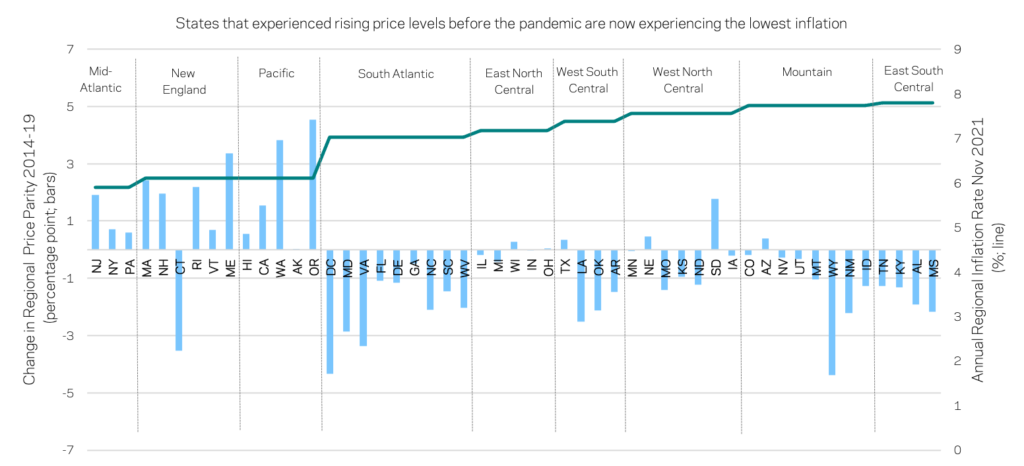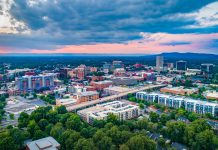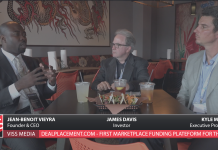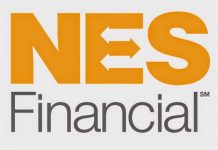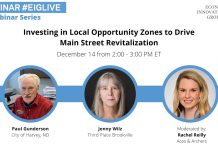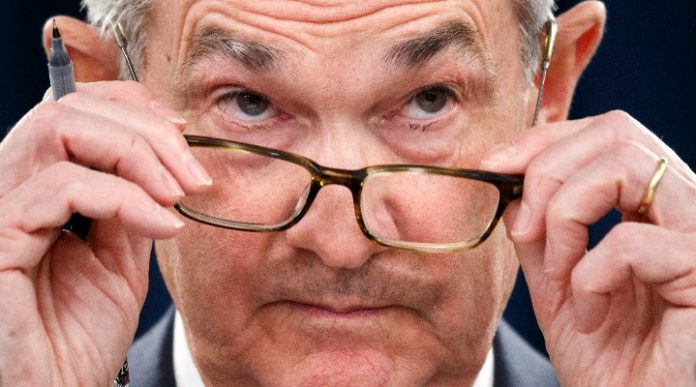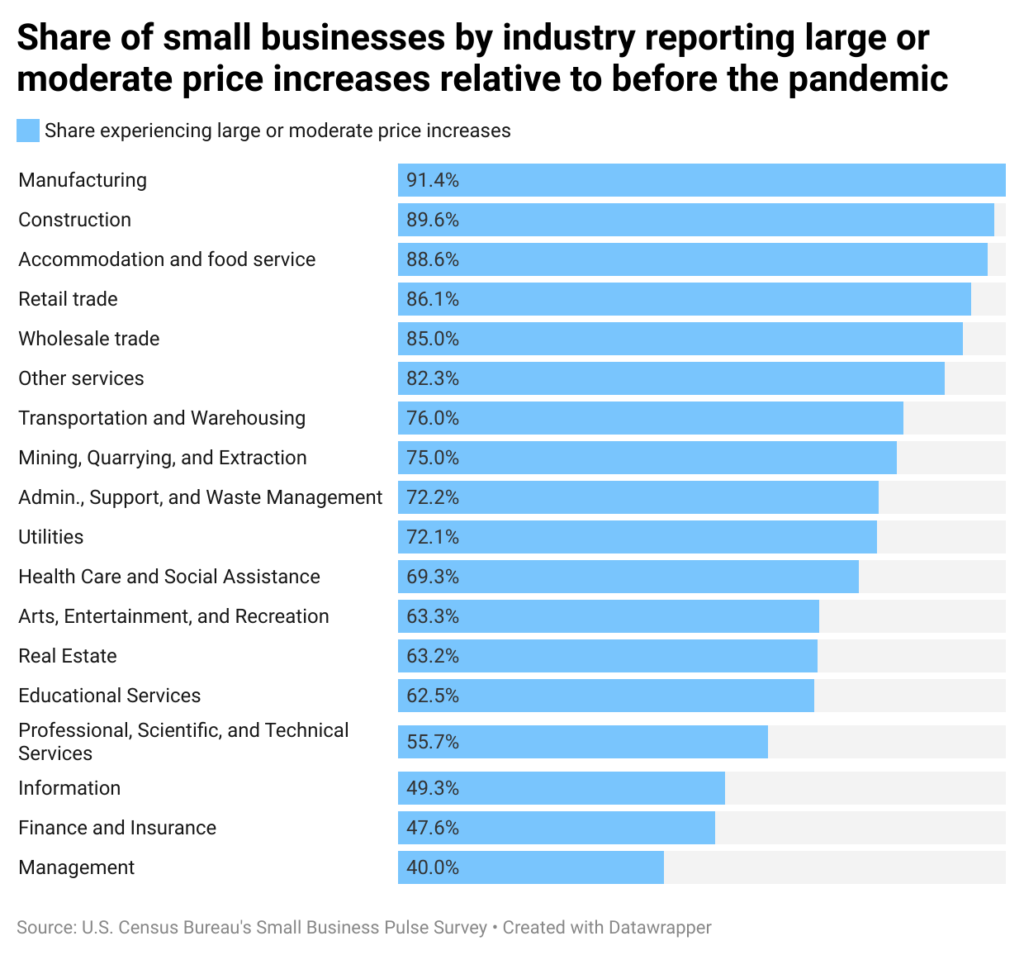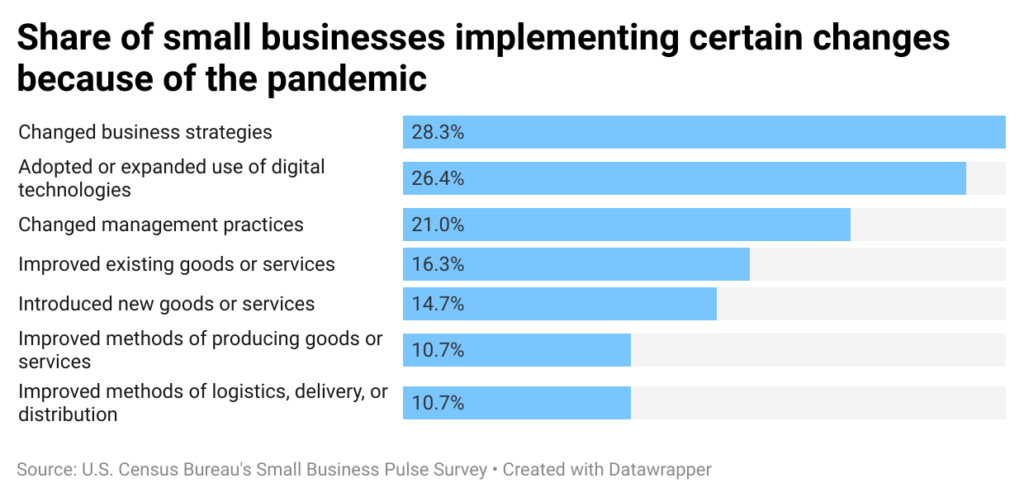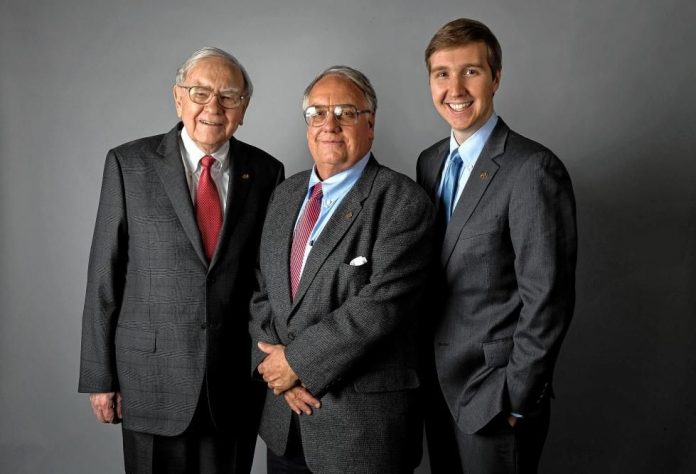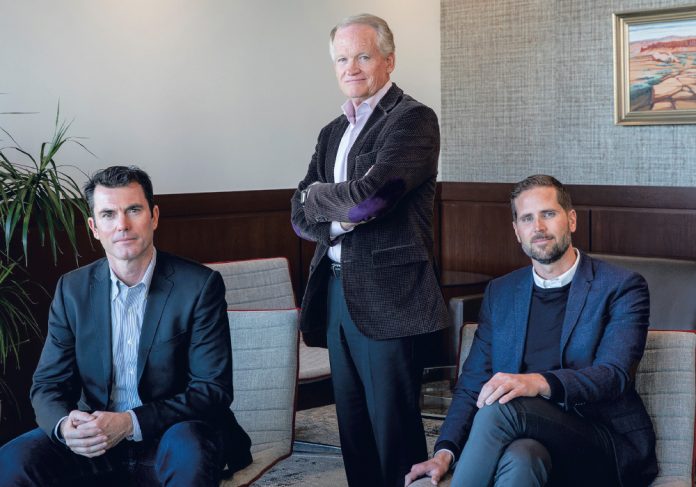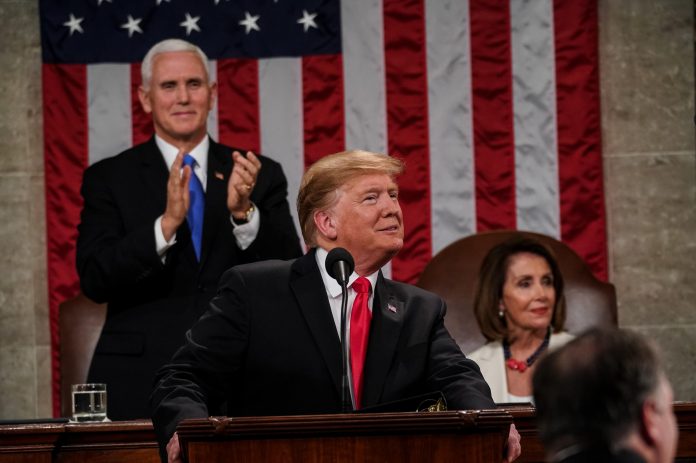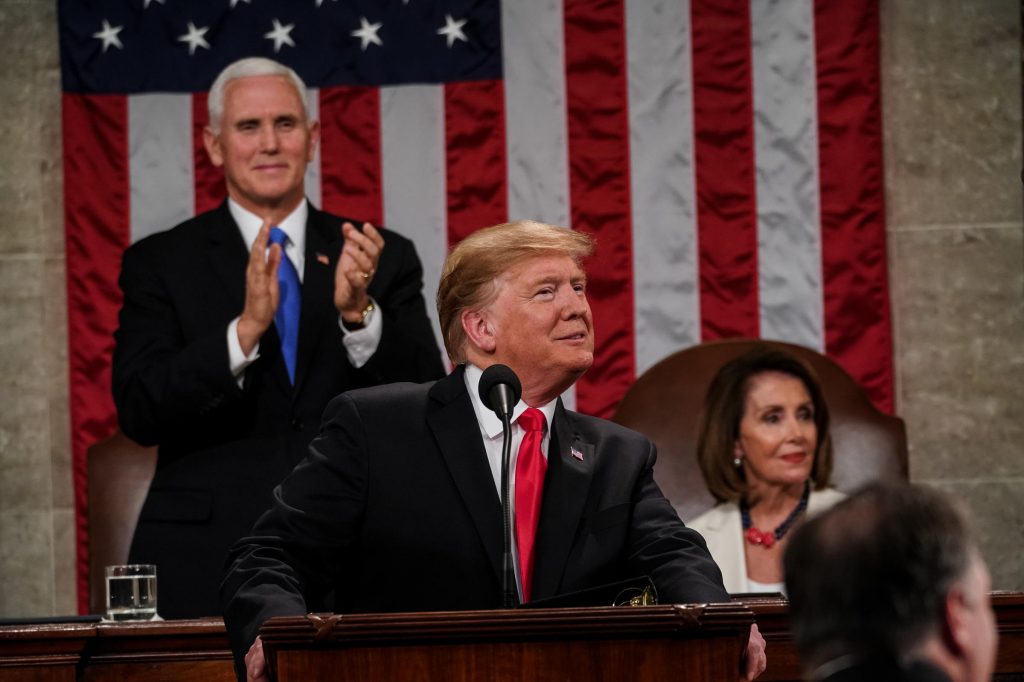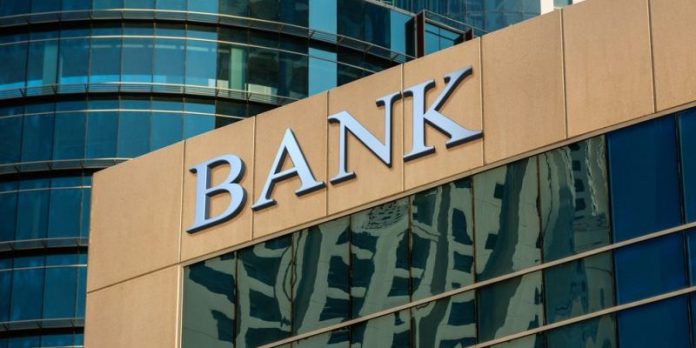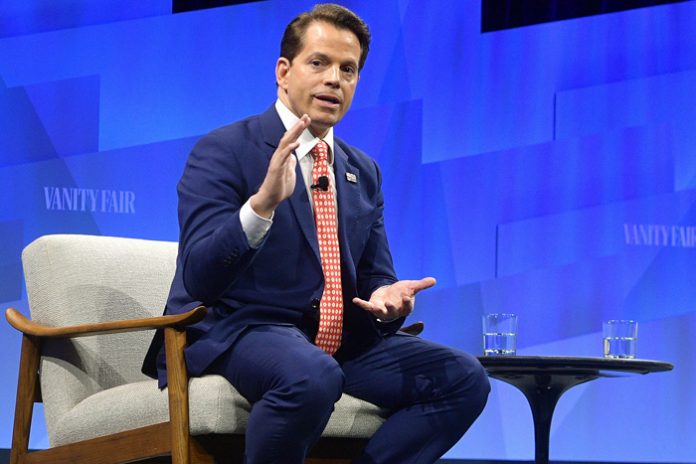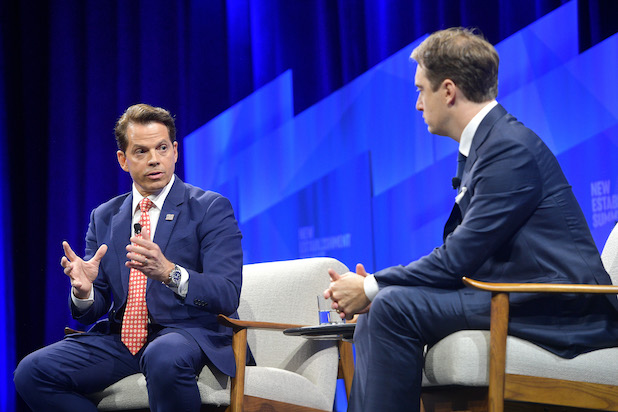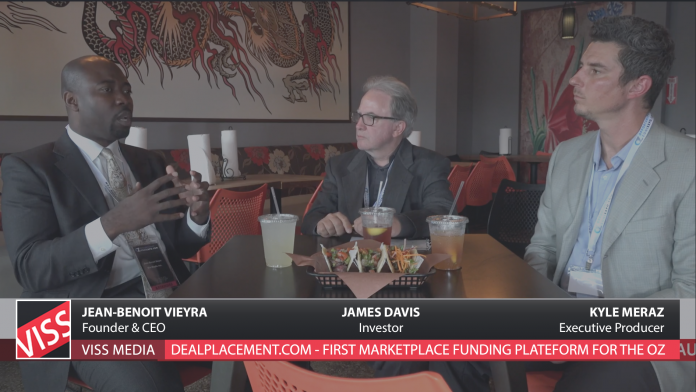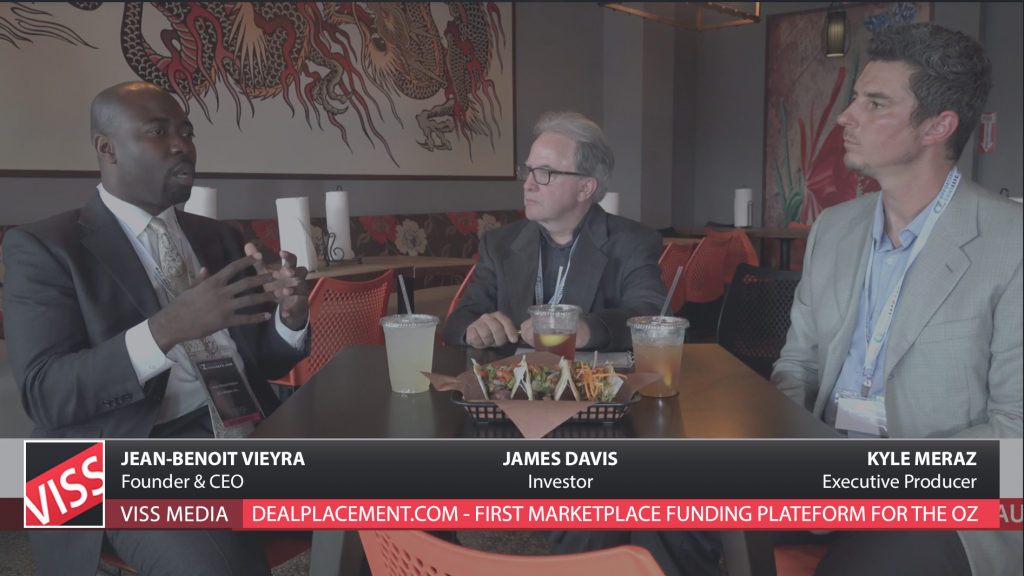Can Catalyst Opportunity Funds serve as both a counterexample to the wave of negative OZ publicity and a model for OZ fund investing?.
Episode Highlights
- How Catalyst uses a proprietary Impact Scorecard to quantify the needs of a community and the reasons behind a community’s distress.
- The institutional geographic divide, and how the Opportunity Zones incentive may be the “perfect catalyst” to move capital from successful coastal communities to places that have high potential and talent.
- The four investments that Catalyst has made so far in Salt Lake City, Bozeman, and Los Angeles.
- How Catalyst’s impact investments can serve as a counterexample to the wave of negative publicity that has been present in mainstream media.
- Two big trends in impact investing: 1) the general growth in the category (and how a well-run Opportunity Zone fund is a great investment product for those seeking impact); and 2) the element of geographic diversification.
- Jim’s approach to impact investing.
- The biggest Opportunity Zone challenges that Catalyst has had to face so far.
- Opportunity Zone trends for this year and beyond, and why Patrick thinks 2020 will be a big breakthrough year for the incentive.
- The potential for more Opportunity Zone legislation and regulation.
- Community Reinvestment Act regulatory reform and the potential for collaboration with banks that can be impactful in Opportunity Zones.
Featured on This Episode
Industry Spotlight: Catalyst Opportunity Funds
Founded by renowned impact investor Jim Sorenson, tech entrepreneur Patrick McKenna, and attorney Jeremy Keele, Catalyst Opportunity Funds launched last spring, aiming to invest in Opportunity Zones in middle America and select opportunities on the coast to truly make a difference. With a focus on workforce development and office space, their first four investments have been identified in Salt Lake City, Bozeman, MT, and Los Angeles.
Learn More
About the Opportunity Zones Podcast
Hosted by OpportunityDb.com founder Jimmy Atkinson, the Opportunity Zones Podcast features guest interviews from fund managers, advisors, policymakers, tax professionals, and other foremost experts in opportunity zones.
Show Transcript
Jimmy: Welcome to the Opportunity Zones Podcast. I’m your host, Jimmy Atkinson. The spirit and intent of the Opportunity Zone Policy is to spur impact investment in some of our nation’s most economically downtrodden communities. In many ways, the incentive motivates traditional investors into impact investing. And I think there’s no one better to discuss this topic with than today’s guests, co-founders of Catalyst Opportunity Funds, Jim Sorensen and Patrick McKenna. Jim and Patrick, welcome to the show.
Jim: Thank you, Jimmy. Great to be here.
Patrick: Yeah, glad to be here. Thank you.
Jimmy: Great to have both of you on the show today. First, let’s start by introducing the two of you. And Jim, we’ll introduce you first. You are the founder of the Sorenson Impact Foundation and funding partner at the University of Utah’s Sorenson Impact Center. Your late father, who was himself a renowned entrepreneur and billionaire philanthropist later in life, was a great mentor to you, and I’m sure had a lot to do with you setting up those organizations. Can you tell us a little bit more about yourself and your foundation and your impact investments?
Jim: Sure. Well, first of all, I really appreciate this opportunity, Jimmy, to join the show. As you mentioned, I had a successful father who was a great example as an entrepreneur, one that was very innovative and very successful in the community and motivation. I think less known is I had a mother that was very empathetic and always, you know, championing causes. And she had a great love for people and service. And so for me, as I grew up, this was a great combination. I wanted to be an entrepreneur, I wanted to succeed on the business stage and had the opportunity to do so. But I gravitated towards businesses and ultimately in my philanthropy and using the experience that I had as an entrepreneur to essentially either invest in or establish businesses that could generate a social impact alongside a financial return.
And this is something that’s happened before the term impact investing was actually coined. And I found myself in line with that and have been promoting impact investing and pretty much involved as an impact investor ever since having formed the Sorenson Impact Foundation, which is very much involved in helping to build the field, helping to fund new impactful businesses as well as intermediaries in helping to establish impact investing. And it was really through that experience that I became aware of this legislation, the Opportunity Zone Legislation, and saw that it had a great potential for motivating more traditionally oriented investors to become impact investors and align myself in trying to help the passage and become involved.
Jimmy: Yeah, that’s great. And I will talk a lot about impact investing on today’s episode, but first, let’s bring on our other guests today. Patrick, you are one of Catalyst’s other co-founders. And like Jim, you’re an entrepreneur yourself who has since become a venture capital investor. Can you tell us a little bit more about yourself though?
Patrick: Sure. And again, I’d like to echo Jim’s sentiments, how much we appreciate you bringing this valuable information to the Opportunity Zone market. I think we’re all getting educated on the pros and cons and opportunities here and with the pun. But the more we can get out and reach people who are interested in this market, the better. You know, I come to this from an entrepreneur perspective. I’ve started four companies, two based in Silicon Valley, successfully exited those two companies, and two companies I founded outside of Silicon Valley, one in Portland, Maine and one in Baltimore, Maryland.
And in doing that, I saw just the high-quality talent all across the country. I also saw the opportunity to bring more capital and more networks to more people around the country. And as I kind of moved on beyond being an entrepreneur solely, I started directing my investing towards these places and have been investing from Milwaukee to Baltimore, from Pittsburgh to Atlanta and have really seen the huge impact of a business perspective. If we can keep more young people and more talented people in places around the country, the more those communities will thrive. And so there’s a lot of ways to define impact. And I really see the entrepreneur backed by sophisticated capital as a huge way to achieve those goals.
Jimmy: Good. So let’s start talking a little more about impact. Now, Jim, I’ll turn to you. Catalyst, your Opportunity Zone fund, is impact-driven. Can you give our listeners an overview of Catalyst’s mission? And also I’d like you to discuss the Catalyst Impact Scorecard Measurement tool that you’ve developed as well.
Jim: Sure. Well, I think our mission really is to be a double bottom line investment firm focused on pretty transformative community development. And the scorecard I think is something that we devised at Catalyst to help us to be able to define what the needs were and in the communities what was lacking, what were the reasons may be behind the distress in communities, and then look for the type of investment or programming that would be able to address those needs and to have a very quantitative way of assessing that in our due diligence process.
So the scorecard basically has already three different steps to it. The first is an assessment that assesses what the needs are. We look at about 30 different databases in that regard to come up with this assessment. The second step really is looking at the investment, looking at the developer, looking at what’s planned, what synergies there might be that we might bring to the table to the developer, how they’re working with the local community, how other partnerships might come to play in the community. It could be philanthropy, it could be service providers, it could be, you know, nonprofit entities as well as the local community in addressing the needs. And then because of the framework we’ve set up with the data that we employ, we can track over time the outcomes of social impact as it relates to the community development that takes place in our investments.
Jimmy: Is this based on the OZ framework or any similar type of framework that’s been developed by a few of the other organizations out there?
Jim: Yeah, and I’m a member of the U.S. Impact Investing Alliance. So I’m pretty familiar with the framework that was established by the Alliance and Beck Center. And it’s similar in terms of the types of things that we look at. It may be a little more comprehensive but I think the important thing here is there’s a very methodical and intentional process that we undergo in Catalyst in assessing the investments that we make and the impact that’s generated and making sure that we have good partnerships with developers and the other stakeholders that are involved in the community to really be able to accomplish truly transformative community development.
Jimmy: Not just developing for the sake of developing or for the sake of generating a return, but also making sure that it fits the needs of the community.
Jim: That’s right. And it’s really part of our investment premise and that is if we can be good actors in a community and help it to become more sustainable and develop an ecosystem for economic growth and vibrancy over the long-term. And remember, these are long-term investments. They’re gonna be good investments, they’re going to retain their value, and they’re going to grow.
Jimmy: Good. Very good. Patrick, I’m gonna turn to you now. I’ve brought upon this podcast a number of times in the past, this concept of there being a geographic economic divide in this country. And it was one of the theses of EIG’s work when they first started developing the Opportunity Zones concept several years back. The vast majority of wealth and investment is concentrated in a select few locations, located primarily on the coast, you know, New York, Boston, Los Angeles, San Francisco, a lot of VC capital goes to these cities almost exclusively. What are your thoughts on this issue and how can the Opportunity Zone incentive help to address it?
Patrick: You’ve really put your finger on such an important aspect of the Opportunity Zone potential, the program potential. When I first heard about Opportunity Zone, this is the program, I was thinking in the context of venture capitalists where I was putting seed money to work in cities across the country. And the question was would there be more capital to grow and sustain these companies in the places I was investing in? And when I first heard about this program, I thought, wow, this is exactly the type of incentive we need is to move the capital from where it’s sitting in kind of unrealized gains in very successful communities on the coast, which let’s be honest, in San Francisco and in New York, Los Angeles, Seattle had done very well, but how do we create an incentive to move that capital to places that have high potential and have that talent? And I thought this program would be a perfect catalyst for bringing that capital.
Let’s be honest about the problem. You mentioned it. 80% of venture capital goes to three States, Massachusetts, New York, and the vast majority of it in California. That’s a problem. And it’s creating this huge institutional geographic divide between places that have high potential, like places that we’re looking to invest with Catalyst. You know, in Ohio and Utah and Kentucky and in Montana, we can use this as incentive to bring more capital to these places that have this talent and this potential. We think we can make a huge impact.
Let’s also hit another piece of data. Brookings recently released some very shocking data that showed that 90% of new tech jobs over the last 10 years have been created in just 5 cities. This is creating a, this is a huge problem for the future of the country. If all of the tech jobs are being created in only five cities, that means that people are moving out of, they go to the University of Michigan or they go to the University of Utah or they go to Carnegie Mellon University and the jobs are out on the coast. It reinforces this divide.
And what we think that we can do with Catalyst is one of our impact priorities is to find that superior return. Because remember, the program doesn’t work if you don’t have a return, but then add the measurable impact. Like how does it impact the community? How does it impact jobs? What are the things that are missing in these communities that then whether it’s, you know, the built infrastructure for growth, is it affordable housing for workforce, all of these aspects that can then lead to that seeding of the next level of investment. And so yes, the geographic divide is one of the biggest problems we’re facing as a country. The Opportunity Zone program is really well aligned to it, in that we believe that with our approach to the returns and the impact, we have a terrific formula for identifying the opportunities but then measuring ourselves to see them through to that impact.
Jimmy: And your investment opportunities, are you looking primarily at real estate investments at this point? Or are you looking at businesses or a combination of the two?
Patrick: So we’ve kind of seeded in a couple of different stages. The immediate stage would be on the real estate side. That’s what’s most ready. That’s what’s most understood by the investor group who’d be looking to invest. And those are the things that we’ve identified. Those would be both classic commercial space, modular workspace to support startups, but also tech workforce housing in places that don’t otherwise have the housing to support this workforce.
Phase two of this is where we, both Jim and I are really highly committed as entrepreneurs, would be to create an investment fund that would invest in the qualified Opportunity Zone businesses that would be in these, the same thesis. So we think that also would be a separate investor class potentially. And also a little bit a different thesis, but the same geographies.
Jimmy: Okay. I got you. So you’re kind of in stage one right now, which is laying the infrastructure, the real estate infrastructure. Stage two would be then to invest in QOZBs Qualified Opportunity Zone Businesses that are moving into your infrastructure that you’re developing. Is that right? Is that fair to say?
Patrick: Whether we develop it or other investors are developing it around these areas, yes. But we think that there’s definitely a huge opportunity for funding qualified businesses in these Opportunity Zones and we definitely see that as our kind of phase two of our fund.
Jim: I would also say that we’re really trying to look at an ecosystem that supports entrepreneurs and new businesses. And a lot of that goes to the programming that was in the real estate. So they’re very synergistic in that regard.
Jimmy: And Jim, how many investments has Catalyst made so far and can you describe the impact that those investments intend to have?
Jim: Sure. We’ve made four investments thus far. We’ve made an investment in a project here in Salt Lake that’s referred to as Industry. The industry is the developer and it’s an adaptive reuse of an old iron forge that dates back to the early 1900s that encompasses roughly about 340,000 square feet. And this will create a creative office campus for entrepreneurs and a community and event space. There’ll be shared amenities and I think really a lot of support for local businesses that will ultimately we hope locate here and we find are interested in this space. And then it’s coupled with other phases where there is residential workforce housing and potentially housing for low income as well.
Another part of another investment that’s also an Industry investment is in historical two buildings, the Pickle and Hide buildings here in Salt Lake City. And these will also provide affordable housing units for low to moderate-income residents, as well as creative office and retail space. We have invested in Bozeman in an affordable workforce housing there that meets the need for a very pent up demand for affordable housing in the 65% of AMI price range. So it is very much gonna have impact there. There are about 60 units there.
And then we’ve invested in SoLa, which is a developer and impact fund in the inner city areas of South and Central Los Angeles that’s focused on about a 98% Black and Latinx community thereof which almost a third are homeless. So it’s a very innovative investment that is really touching the very bottom of the economic pyramid in that distressed area.
Jimmy: It’s a foreign investment made so far. A lot of mixed-use, it sounds like, particularly in your Salt Lake City investments, but also a fair degree or a large component of affordable housing or low income.
Jim: So affordability is really important. I think clearly creating an ecosystem for economic growth and development in SoLa. There is also adaptive reuse of the old Goodyear plant that will be also creative office and a tech hub space right in the middle of this distressed community. And we’re working with developers that control significant amount of ground and have projects that are multifaceted that can address the various needs within the community rather than just one-off projects.
Jimmy: That’s great. It’s clear to me that your investment thesis goes hand in hand with the spirit of this incentive, which is as we mentioned at the top of the show impact investing in economically-downtrodden communities that have typically lacked the investment that they need. At the same time, there’s been a lot of negativity surrounding the Opportunity Zone Incentive in some of the mainstream media over the past several months. Patrick, I wanna turn to you now. How can Catalyst help to serve as a counter-example does some of this negativity and possibly become a model for other OZ funds to follow?
Patrick: I think it’s such an important question and topic. And we find it very unfortunate that a lot of the early press on projects have been negative. And to be expected, there will always be some examples of abuse or programs of projects that are outside of the spirit and theme of the program. But what we believe that we can do in this is to create literally the counter-example. I mean, the two fundamentals of Catalyst, and I think for the program, is superior returns because the whole incentive is brokered around this idea that you have a return on your investment. No return, no incentive. And the other is the impact. And we take it very seriously by holding ourselves accountable to measuring that impact over the course of time. Those are the two foundations of our fund that we put right in the first page of each one of our memorandums is what does the return profile look like and what does the impact look like?
And I think as we showing that example that those two can live together, some people may have questions and say, are you gonna do, if you do impact investing, you can’t have a great return and if you do, you get great returns, you can’t have the impact. I think that we can lead by example by showing that you can do both. That there are enough projects all around this country that are high-potential, have value, that is undercapitalized. They’re overlooked. And if we then using, you know, Jim and I and Jeremy and Krishna, the other two partners, experience on how to identify, how to underwrite, and how to gather resources around these, we can show a new model that says, yeah, there is impact and there is a return.
The last thing I wanna say about the way we really also think about this impact is it’s about the community. It’s not always about what we think is the impact, and this is the highest of our list is what did the people in Bozeman need? What do the people in Salt Lake need? What do the people in South Central need? What do the people in Columbus need? Their view of their need is at the top of the list of whether this is impactful or not because we have a view but it needs to match what those communities are saying they need so we can support them in their future. Because remember, these are long-term investments. We are in these investments for at least 10 years, probably more like 10 or 12 or 13 years. And our ability to operate within that longer-term need, gather allies, continuing to invest around it, is gonna be the most positive for our investment. So this is the question that we’re answering, can Catalyst be the example that others can follow?
Jimmy: Right. And I hope the answer is yes. You mentioned that you, you know, these are long-term investments, 10, 12, 13 years. Can you talk about your exit strategy a little bit? Because at the end of the day, in order for the investors to achieve that tax benefit of not paying capital gains, there needs to be a divestment or sale of the assets or equity interests in the fund. Did you have an exit strategy that you’d be willing to share?
Jim: I mean, certainly each one of the projects that we invest in has its own expectation of exit, you know, whether it’s a housing for, you know, in one of these projects or if it’s a commercial space. I mean, each one of these communities, each one of these projects has its own set of exit potentials, whether it’s, you know, after the qualified 10 or 12 years selling or refinancing or some other way. I mean, we pretty much have each one of these is kind of a separate example of how to exit. I will say that the rules have clarified how we can do this in more flexible ways, which has been a big help, which will allow us to invest in different projects, which will help us over the long term.
Jimmy: Yeah. That was welcome news that benefited multi-asset funds quite a bit, the new regulatory language that came out in December of last year. Definitely welcome news there. So we’ve talked about impact investing a little bit. I want to talk about capital raising just a little bit if we could. You already have a headstart on having an investor network of high net worth individuals and family offices focused on impact investing. So this may not be that tough of a sell for you to get, you know, your network of investors interested or excited about the Opportunity Zone Program. Is that fair to say? And what advice do you have for, if any, do you have for other Opportunity Zone fund sponsors who may not have the same type of network that you guys already have built-in?
Jim: We are differentiated, Jimmy, from many of the funds in that we do have a very intentional impact focus. And there is a big market we think and we’re finding for that amongst many of the, you know, family offices, the high net worth individuals. And I think even there’ll be institutional interest because clients want this type of investing in their portfolios. And we’re naturally aligned because our networks work well. My suggestion for others would be to really learn from what we’re doing and become more familiar with the impact investing community and start developing their approaches and intentionality and focus on true impact investing.
I think this program, this legislation is really a moonshot when I became aware of it for impact investing because it really provides a very natural incentive and on-ramp for investors that would not typically be interested in investing in distressed communities to start looking at the investments in the communities. And as they become aware, as they become aware of the good that can be done and the benefit to those living in these communities, they will develop a sense of empathy and interest that I think will get them looking beyond just the financial return to the social impact.
And we’ve seen that in our own prospecting of investors where an investor is initially looking at the tax arbitrage, but after really relating to the conditions in some of these communities, maybe that community that they came from and understanding what these investments can do, it becomes a whole different conversation and interest. And I’m convinced that we have traditional investors that have invested in our fund because of becoming aware of the impact and the good that can be done alongside the financial return. And truly that is, I hope the message that other funds pick up on. I’d like it to be a competitive advantage. But as a true impact investor, I wanna see this scale and others come on board and utilize this ready for impact investing and the potential it has for good in the distressed communities.
Patrick: Yeah. And if I could add just two layers on top of that, Jimmy, because Jim nailed that answer, is like, there’s just a general growth in the category of impact investing. So if you’re an asset manager or an RIA and you’re looking for, you know, impact product for your clients, a well-run Opportunity Zone fund is an impact product that you can bring to your investors. And it’s gonna shake out and find out who can deliver that impact. We believe that we’re a leader in that. And the other is for us specifically is the geographic diversification.
So a lot of coastal investors are looking for a way to diversify out of their geo, particularly in our real estate fund where they’re heavily invested in, you know, San Francisco or New York or LA. And if they can find a growth opportunity in one of these other markets, they can quickly see how they can get both the impact as well as the diversification. And so those are two big trends that when it comes to us, our thesis of raising money and others who are looking to raise funds for this should probably keep in mind.
Jimmy: No, that’s tremendous. So just kind of to summarize that last topic of discussion, there is an impact investment community or an impact investor community that OZ fund sponsors may wanna tap into. But at the same time, there’s also…that community is also growing because of this Opportunity Zone Incentive Program. The carrot that’s getting dangled in front of these investors obviously is the huge tax benefit. But I think that turns the investor onto impact investing in a way that nothing else really ever has.
And then Patrick, to summarize your main points, the benefit of an Opportunity Zone investment if you’re an RIA who has clients who need to place capital, there are two factors there. There’s the impact factor, the impact component, but there’s also the geographic diversification component, which is an interesting point. I agree with that. Jim, I want you to talk to me now if you could about your impact investing process. And how has the Opportunity Zone program challenged you to modify your approach to impact investing?
Jim: Well, I don’t know that it’s really modified my approach. I mean, when I invest for impact, the basic fundamentals for due diligence on the financial side are essentially the same. I’m looking at the management team, I’m looking at really the markets and the fundamental business plan and value proposition that’s brought to that investment. And then alongside that, I’m assessing what the social impact is, how committed the management team is to the social impact, and how related it is to the success of the financial investment because they need to be interrelated. And then ultimately make a decision to invest based on the outcome of those bottom lines, one financial and the other one social impact, according to the merits of the investment. And the approach that we’ve taken with the scorecard, and have really institutionalized in Catalyst in our due diligence process, basically does go through that very same process.
And so right from the get-go, we’re very interested in the development teams that we’re working with. Do they have successful track records? Have they delivered? Are the community-focused? Are they committed to the community? And do they have an appreciation for impact? And those are the type of developers or management teams that we want to focus on. And then we look at all of the other relevant, important factors that are needed for a successful financial investment alongside, you know, what the community’s needs are and how the impact is generated. And then ultimately how that impact makes that investment more sustainable.
I mean, if we have new businesses, if we have incomes that are rising within the community and then it just drives demand for housing, it drives demand for other services. I mean, it becomes an ecosystem of economic vibrancy that builds upon itself. And it’s a kind of a reverse of what’s happened in these communities that have seen financial investment that’s gone to other areas or that’s been left behind. So it really is trying to develop a synergy between the impact and the financial returns.
Jimmy: That’s great. Great. Jim, what are some of the biggest Opportunity Zone specific challenges that you faced so far?
Jim: Well, I think out the gate, the legislation was really ambiguous, incomplete, a lot of questions. And on top of that then needing to educate the investor and the investment community, I think that was certainly a challenge. I think there have been misperceptions and we’ve talked a little bit about the negative press. And I think there needs to be, I think, really good examples and view of successful projects that are generating what was intended in the legislation. And I think much of the press is focused on a fairly few sensationalized and politicized examples that have not really accurately portrayed what’s going on in communities and in many of these investments. And that’s I think helped to create some confusion and concern in the investment community.
I think that’s largely getting worked out. I think there will be more and more good examples. And I mean, that’s one of the reasons why I threw my hat into the ring in joining with Patrick and the others to form Catalyst was to really, you know, demonstrate that the true impactful investing that could incur to double bottom-line returns. I think that having said that, you know, I’m encouraged with the momentum that I’ve seen from the last quarter. I think clearly investments are up. I think with the last round of regs that have come out, they’ve helped to clarify and I think to streamline and make it more convenient for fund investing as Patrick mentioned. And I see a lot of good momentum going into the new year.
Jimmy: I agree with you. It seems like the momentum is definitely trending in a positive direction. Patrick, what are your thoughts on the momentum and Opportunity Zone trends for this year and beyond? And what do you expect to see from the program?
Patrick: I’ll put two thoughts on the table for this. So I think 2020 is going to be a very big breakthrough year for the program. I mean, we’ve just gotten clarity, the rules have just been finished. But a lot of really good actors, a lot of very high intention funds and project developers, have been putting things together over the last year. And we’re gonna start to see the fruits of that labor in 2020. Some great projects with high impact, with terrific investors creating these models, we believe we’re part of that trend. And that’s really gonna be 2020 where we’re gonna have very serious examples of what’s possible with this program.
Looking forward beyond 2020, it’s even more exciting because there’s a whole cohort of entrepreneurs and communities that are now thinking, they just got started thinking about what could they do, what types of projects could they get funded in their communities that kind of meet these criteria of return and impact, that they’re gonna start pitching these projects to investors like Catalyst. And so I’m really excited to see the pipeline develop over 2020 for new projects going into 2020, 2021 where we’re gonna even have a higher level of quality. And so I think the sustainability of this project is going to come together in 2020 and then this, the version two of these projects that are just starting to get imagined today will start to be revealed in the marketplace in 2021.
Jimmy: And do you anticipate any new laws from Congress or increased regulations from the government? And what do you think the impact will be on that front?
Patrick: I mean, I’ll speak for one that I think is really important that we support as a fund is more transparency and more impact scoring. I think it’s really important for players in this market who are getting this incentive to be transparent about what they’re doing and the impacts that they’re creating. We’re taking the lead on that regardless of regulations. So we’re setting up for that. But I think it would be good for the entire program if there was more measurement of what good was happening and got some conformity around what those measures of success would look like. I expect that we will see some movement there that’s pretty bipartisan. And but we’ll keep our eyes on it.
Jim: And I would just add I’m encouraged to see CRA reform that incorporates Opportunity Zone into the permitted uses for CRA money. I think that there is a great opportunity for collaboration with banks and blended capital stack that can be innovative in Opportunity Zone investments.
Jimmy: Yeah, I agree with you there. That’s the Community Reinvestment Act, a new regulation that you’re referring to, the FDIC and the Office of the Comptroller of the currency just released proposed regulations on that within the last few weeks I believe. Might be a while before those regulations get passed through, but that is encouraging as well. I agree with you, Jim, and certainly a lot of new legislative bills hit the floors of Congress the last few months of 2019 regarding the Opportunity Zone Incentive. Whether those get passed or not this year or in the future is I guess only time will tell, but we’ll see what happens on that front. Well, I think we’re just about out of time, gentlemen. Thank you both for joining me today. This has been great. Jim, before we go, can you tell us where our listeners can go to learn more about you and the Sorenson Impact Foundation and Catalyst Opportunity Funds?
Jim: You bet. SorensonImpactFoundation.org, certainly all about the Sorenson Impact Foundation. I also endowed the Sorenson Impact Center at the University of Utah. And so there’s a lot of combined work there and Opportunity Zone related data. You know, a lot of student interaction. SorensonImpactCenter.org would be another great place to learn more about the work that we’re doing.
Jimmy: And Catalyst Opportunity Funds has a website as well?
Patrick: CatalystOZ.com
Jimmy: Perfect. And for our listeners out there today, I’ll have show notes for today’s episode on the Opportunity Zones database website. You can find those show notes at opportunitydb.com/podcast and there you’ll find links to all of the resources that Jim, Patrick, and I discussed on today’s show. Jim and Patrick, again, I appreciate your time. Thanks for joining me today.
Jim: Thank you. Great to be with you.
